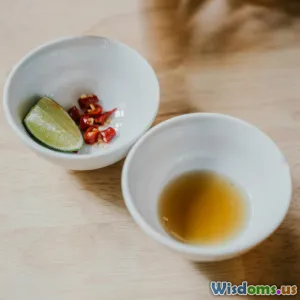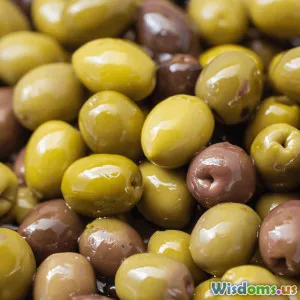
The Art of Matching Ingredients
6 min read Explore the nuances of ingredient pairing to enhance your culinary creations and elevate your cooking skills. (0 Reviews)
The Art of Matching Ingredients
Cooking is often perceived as a straightforward process of following recipes. However, the true artistry lies in understanding how to match ingredients. Whether you’re a seasoned chef or a novice in the kitchen, mastering the art of ingredient pairing can significantly enhance your culinary creations. In this article, we will explore the fundamentals of ingredient matching, provide practical tips, and delve into the science behind flavor profiles.
Understanding Flavor Profiles
Every ingredient has a unique flavor profile, which refers to its taste, aroma, and texture characteristics. Understanding these profiles is crucial for successful ingredient pairing. Here are some common flavor profiles:
- Sweet: Ingredients like honey, fruits, and sugars are naturally sweet and can balance out bitterness or acidity.
- Savory: Often described as umami, ingredients such as mushrooms, tomatoes, and cheese add depth and richness to dishes.
- Sour: Citrus fruits, vinegar, and fermented products bring brightness and cut through fatty flavors.
- Bitter: Ingredients like dark leafy greens and coffee can add complexity, especially when balanced with sweetness.
- Salty: Salt enhances flavors, but other salty ingredients like soy sauce or olives can also contribute to depth.
The Science of Flavor Pairing
The idea behind flavor pairing is rooted in the chemical compounds present in various foods. For instance, strawberries and balsamic vinegar create a delightful contrast because the acidity of the vinegar complements the sweetness of the strawberries. Research has shown that certain flavors are more likely to pair well based on their chemical makeup. For example, foods that share similar flavor compounds often harmonize beautifully when combined.
Classic Pairings: Tried and True Combinations
- Tomato and Basil: A classic pairing in Italian cuisine, the sweetness of tomatoes pairs perfectly with the aromatic, slightly peppery flavor of fresh basil.
- Lemon and Fish: The brightness of lemon enhances the flavor of fish, cutting through its richness and adding a refreshing note.
- Chocolate and Chili: The warmth of chili enhances the depth of chocolate, creating a complex flavor profile that excites the palate.
Tips for Matching Ingredients
- Experiment with Herbs and Spices: Fresh herbs and spices can dramatically change the flavor of a dish. Consider pairing rosemary with roasted meats or cilantro with lime and seafood.
- Balance Textures: Think about the textures of your ingredients. Pair crunchy vegetables with creamy dressings or sauces for a delightful contrast.
- Consider Seasonal Ingredients: Seasonal produce often has the best flavor and can guide your ingredient choices. For example, pairing fresh summer tomatoes with basil and mozzarella is a perfect seasonal match.
- Use Acidity Wisely: Adding a splash of vinegar or a squeeze of lemon can elevate a dish, balancing richness and enhancing flavors.
Practical Applications in the Kitchen
- Taste as You Go: One of the best ways to learn about ingredient pairing is to taste your food as you cook. This will help you understand how different flavors interact.
- Create Your Own Combinations: Don't be afraid to experiment! Try combining ingredients that you enjoy separately. For instance, if you love apples and cheese, consider pairing them in a salad with walnuts and a honey vinaigrette.
- Document Your Discoveries: Keep a cooking journal to note successful pairings and those that didn’t work as well. Over time, you’ll build a repertoire of flavor combinations that you know work.
Conclusion
The art of matching ingredients is not just about following rules; it's about exploration, creativity, and understanding the intrinsic qualities of the foods we cook with. By familiarizing yourself with flavor profiles, experimenting with combinations, and paying attention to texture and seasonality, you can elevate your culinary skills to new heights. So, gather your ingredients, trust your taste buds, and enjoy the delicious journey of creating harmonious dishes that delight and inspire.
Rate the Post
User Reviews
Popular Posts





















